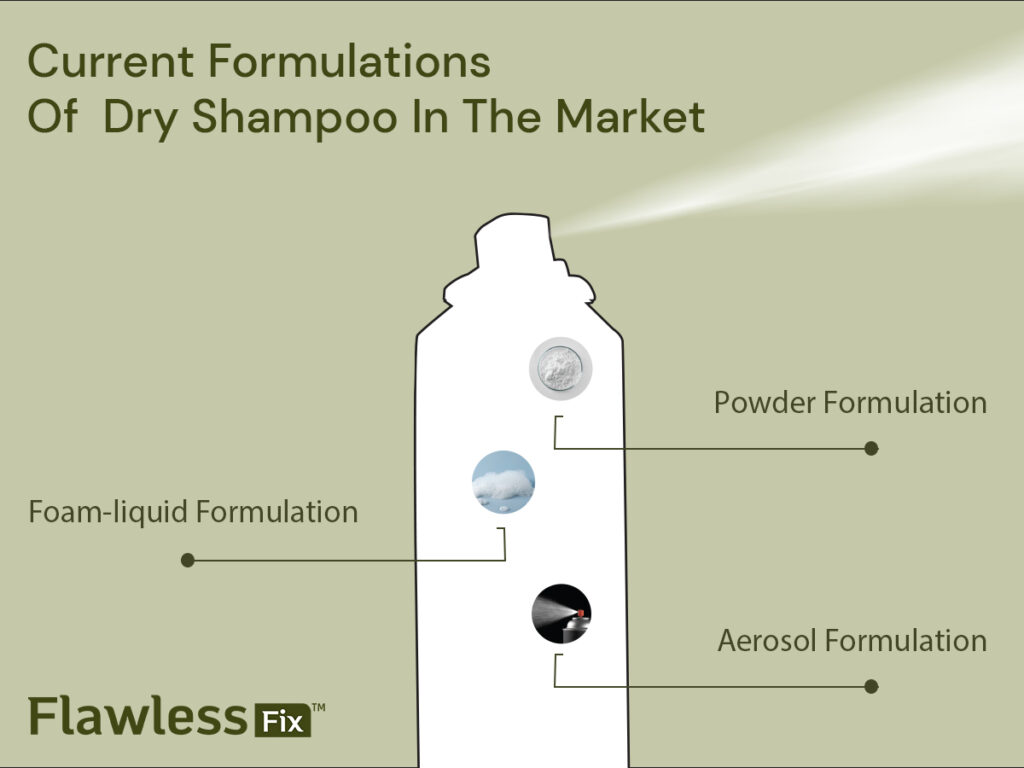Author: Simran Chalke / Date: 04 September 2024
Beyond the basics – Exploring new formulas
From powders to foams and aerosols, dry shampoos have come into various forms. Powder dry shampoos are ideal for absorbing oil, while foams give volume and aerosols offer a more targeted application and absorb excess oil. Let’s explore each type to help you find your perfect match.
POWDER FORMULATION
A powder-dried shampoo absorbs oil and dirt from the hair. Key components include absorbent powders like cornstarch or rice starch to soak up oil, volumizing agents like silica or bentonite clay to add texture, and conditioning elements like silicone to minimize dryness and add shine. Applying dry shampoo directly to the scalp can be messy, and can achieve a uniform distribution, which often necessitates vigorous brushing or massaging. Especially on dark hair, the dry powder can leave a visible white cast that requires thorough brushing or massaging to distribute evenly and remove excess.
AEROSOL FORMULATION
Like powder dry shampoos, aerosol formulations typically contain absorbent powders like cornstarch, rice starch, or clay minerals. The key differentiating factor is using a propellant, often a blend of compressed gases, which pressurizes the product within the can. The aerosol format provides a quick and easy application process, eliminating the messiness associated with the powder dry shampoo. Because the aerosol spray is typically applied at a distance from the scalp, it minimizes direct contact with the skin, reducing the potential for irritation.
FOAM -LIQUID FORMULATION
Liquid dry shampoo presents a unique approach to hair refresh. Unlike its powder counterpart, it’s a water-based formulation incorporating alcohol, conditioning agents, and other chemicals to create a foam-like texture. This format allows for direct application to the scalp and roots, offering an approach to oil absorption.
However, unlike its aerosol or powder counterparts, liquid dry shampoo requires drying time. This can be a drawback for those seeking an immediate solution.
Additionally, some users report a slight stickiness in the hair after a few hours, potentially impacting the overall feel and appearance. While dry shampoo has come a long way, there’s still room for innovation in this exciting field. By understanding various formulations you can select the perfect dry shampoo to address your specific hair needs.

